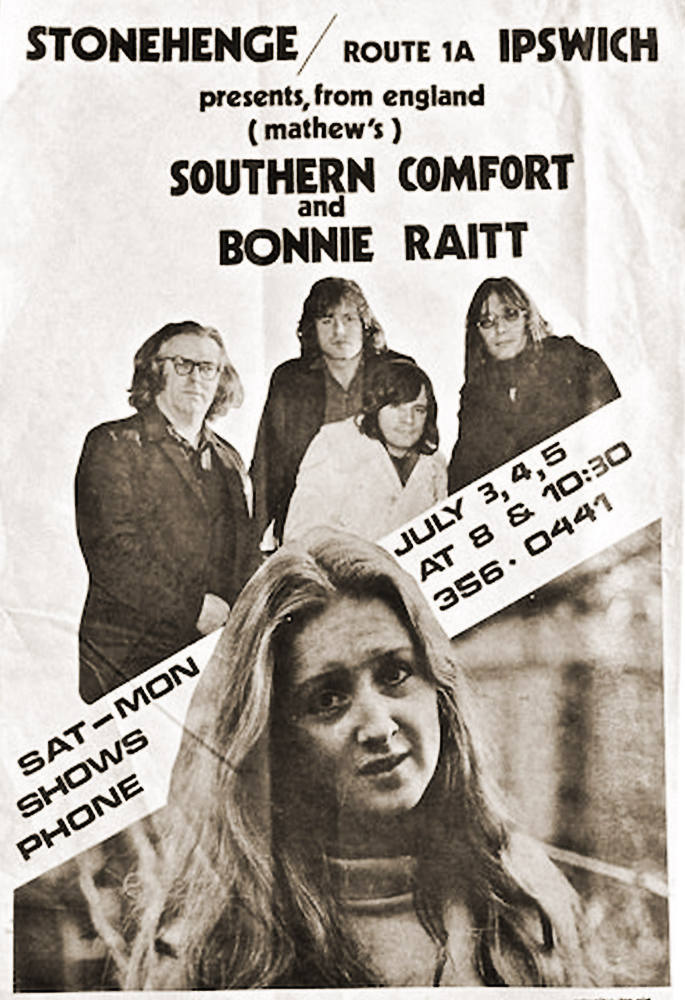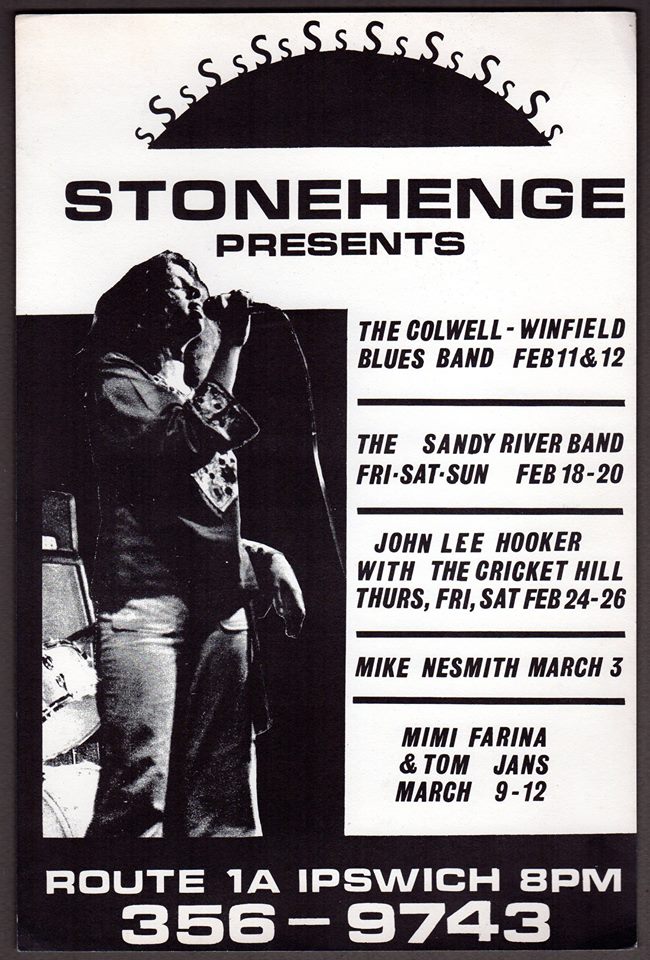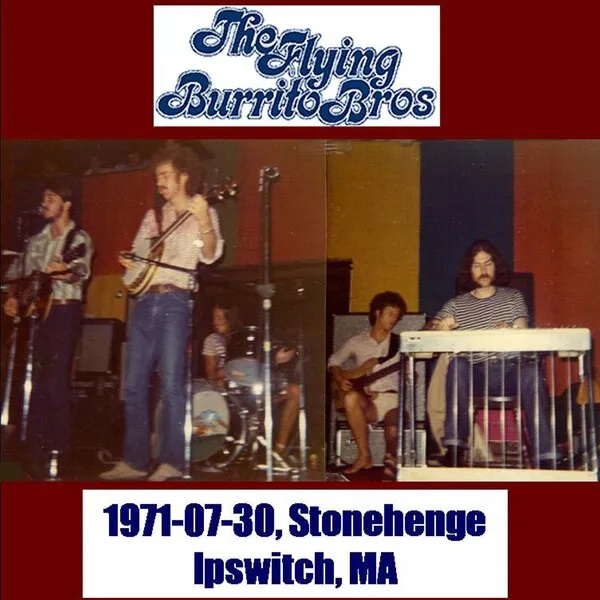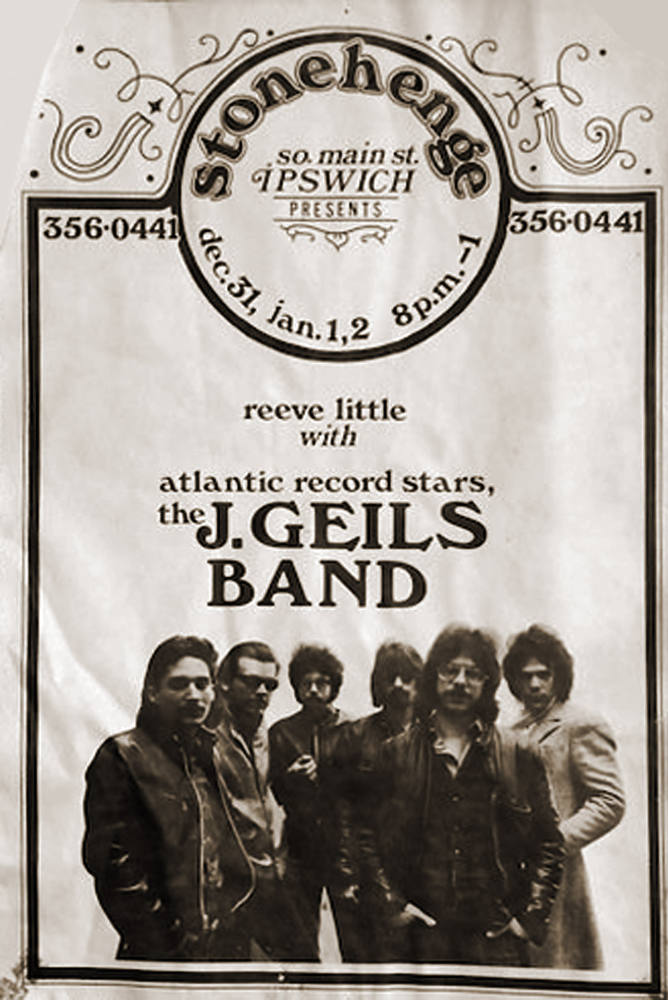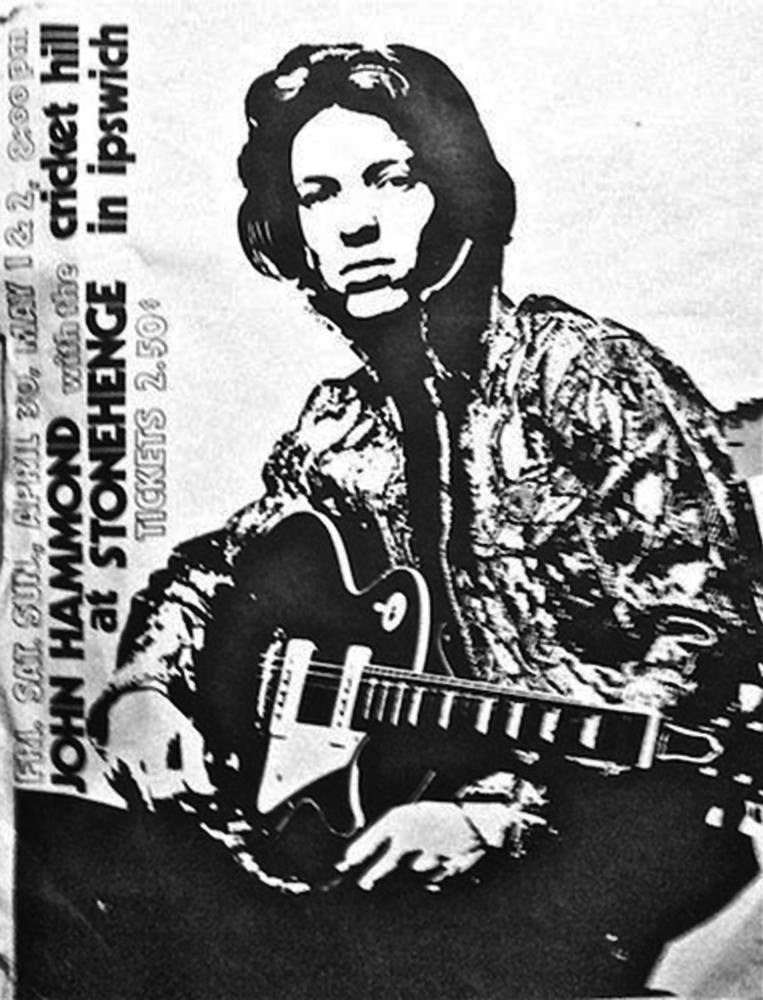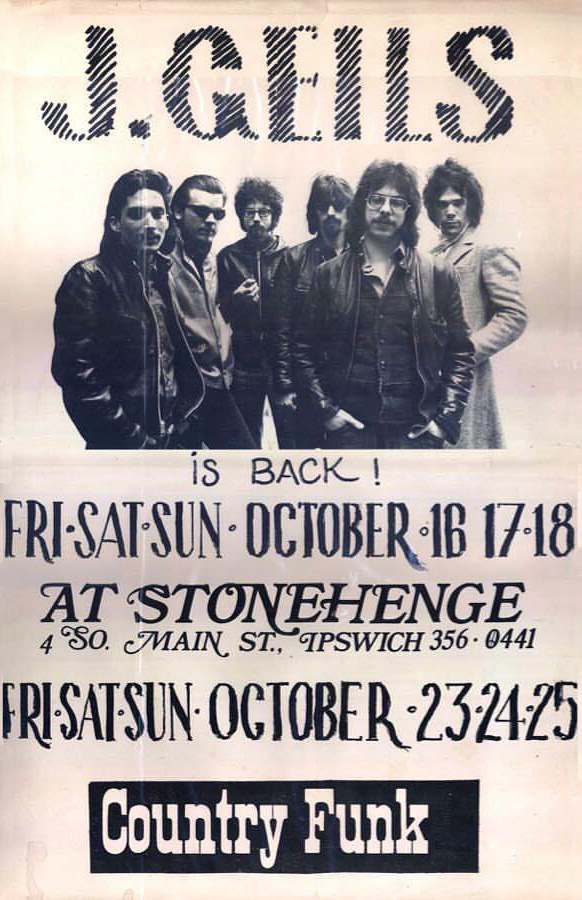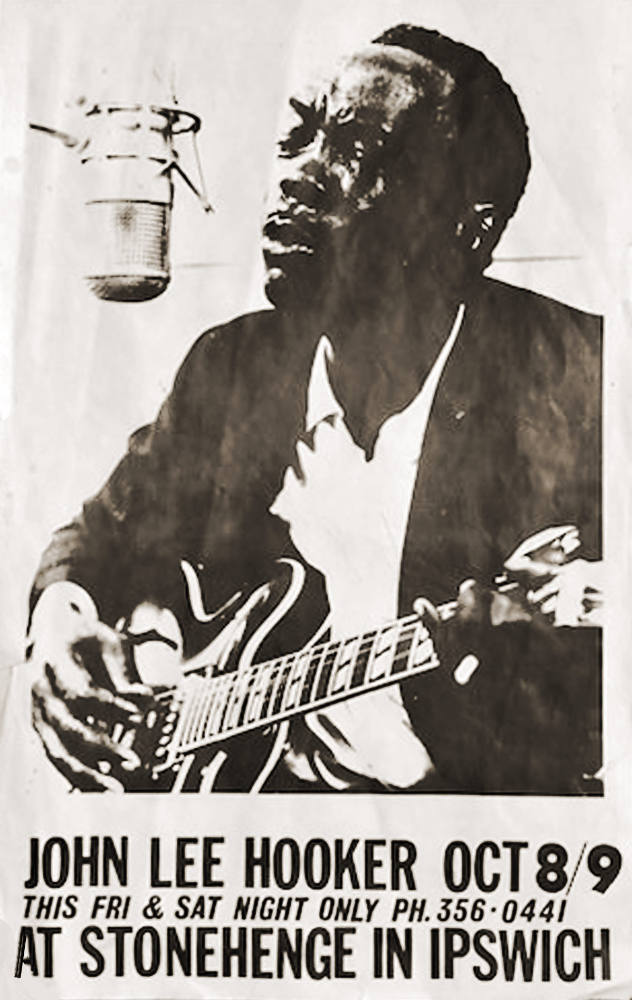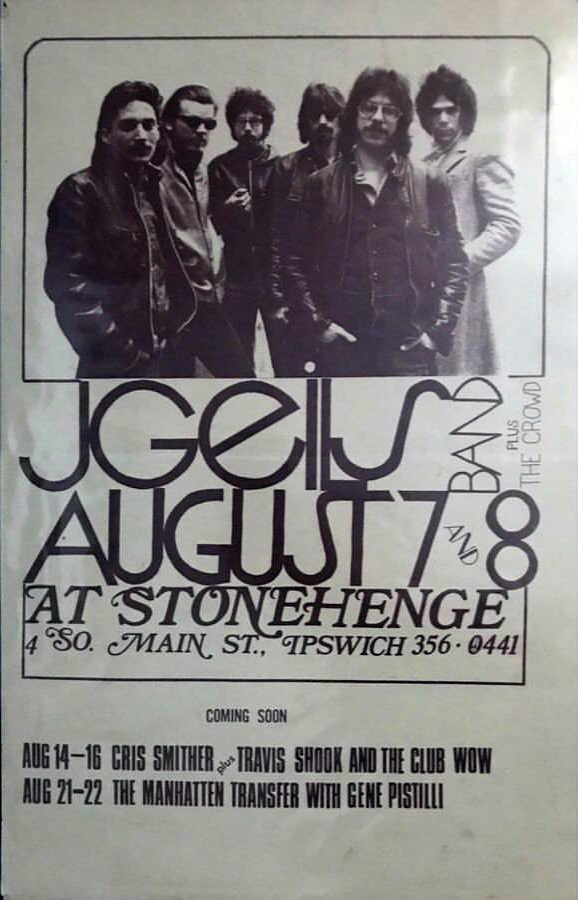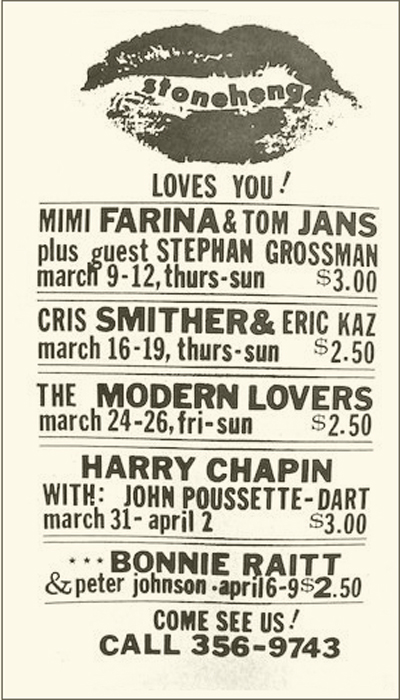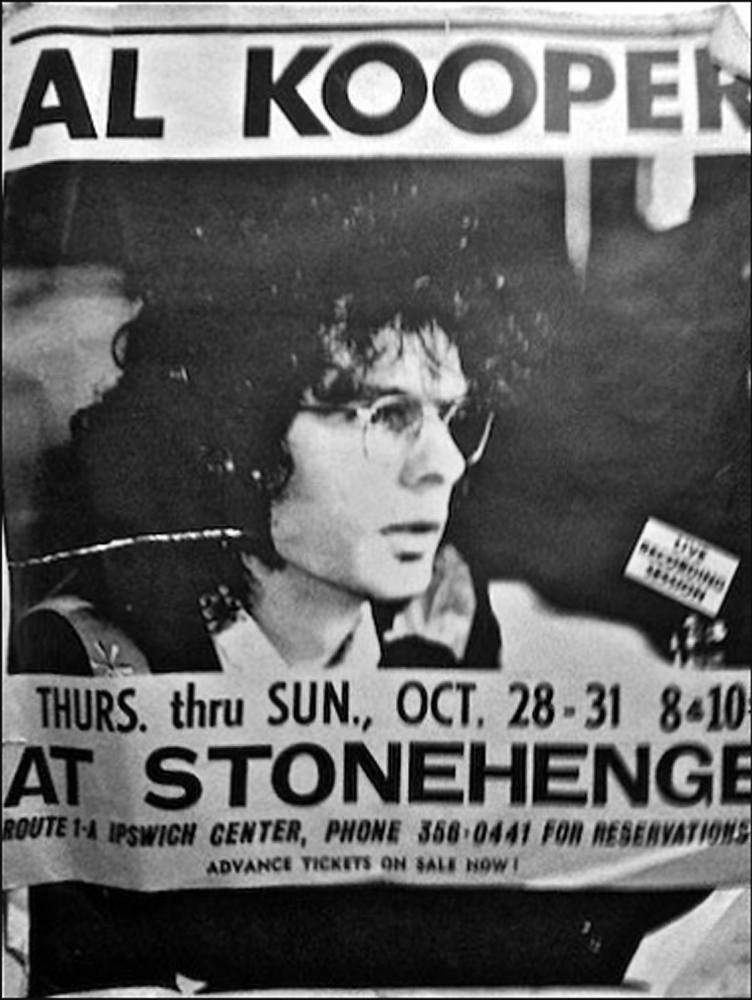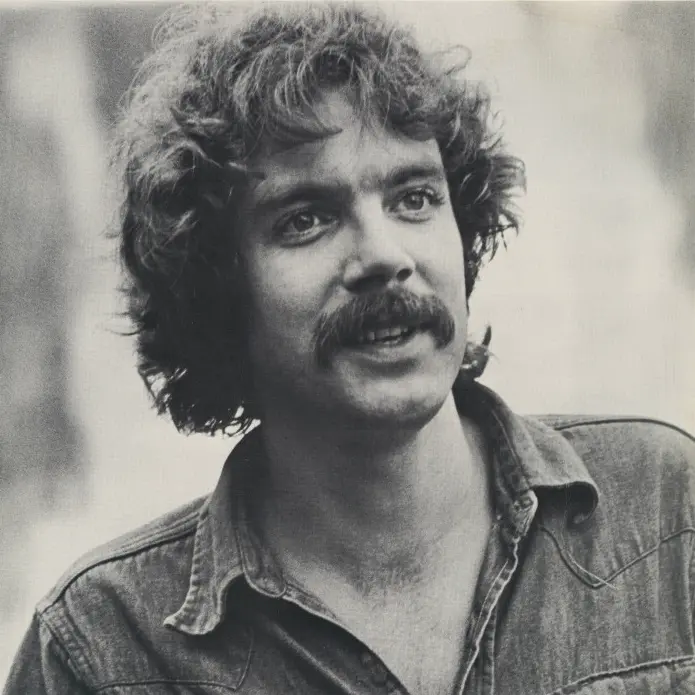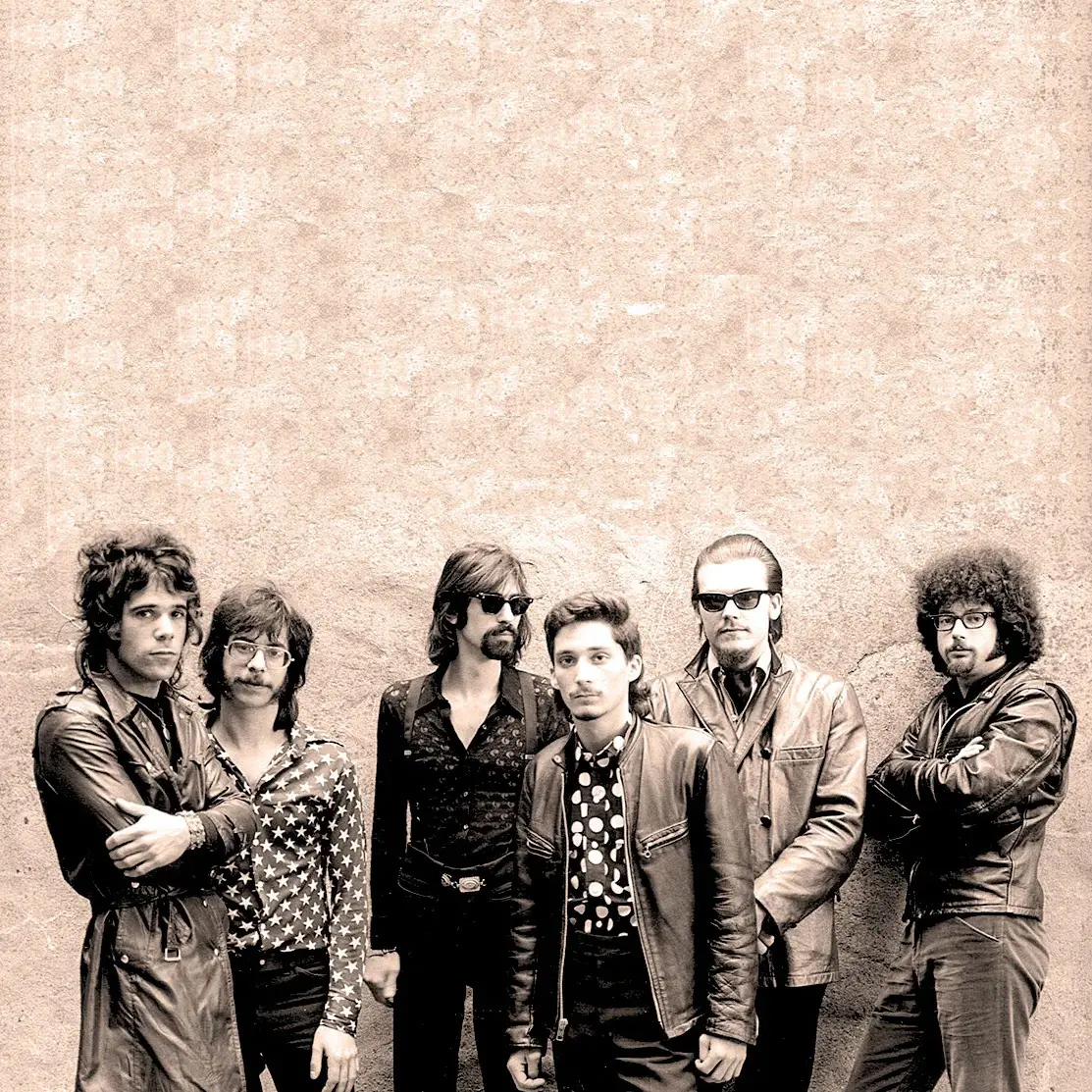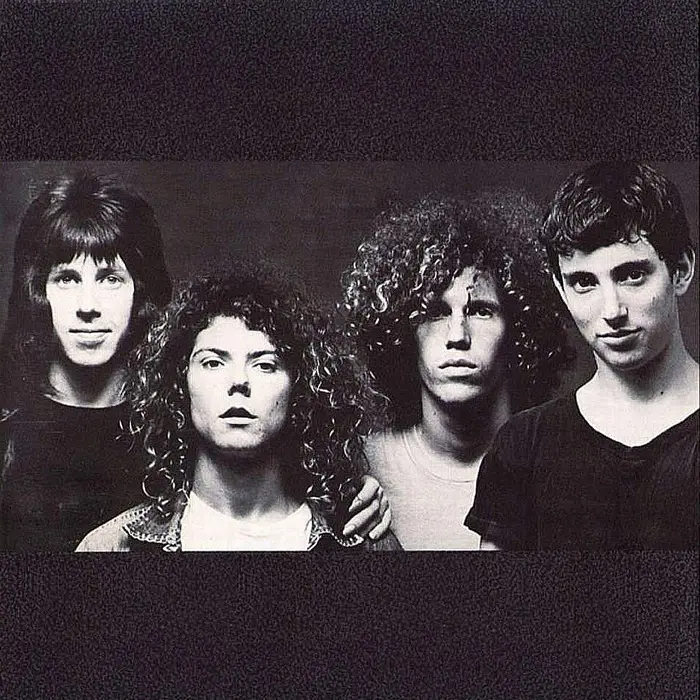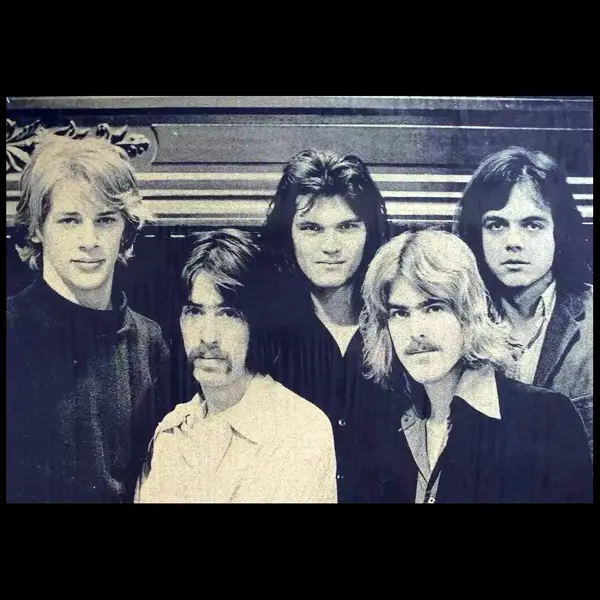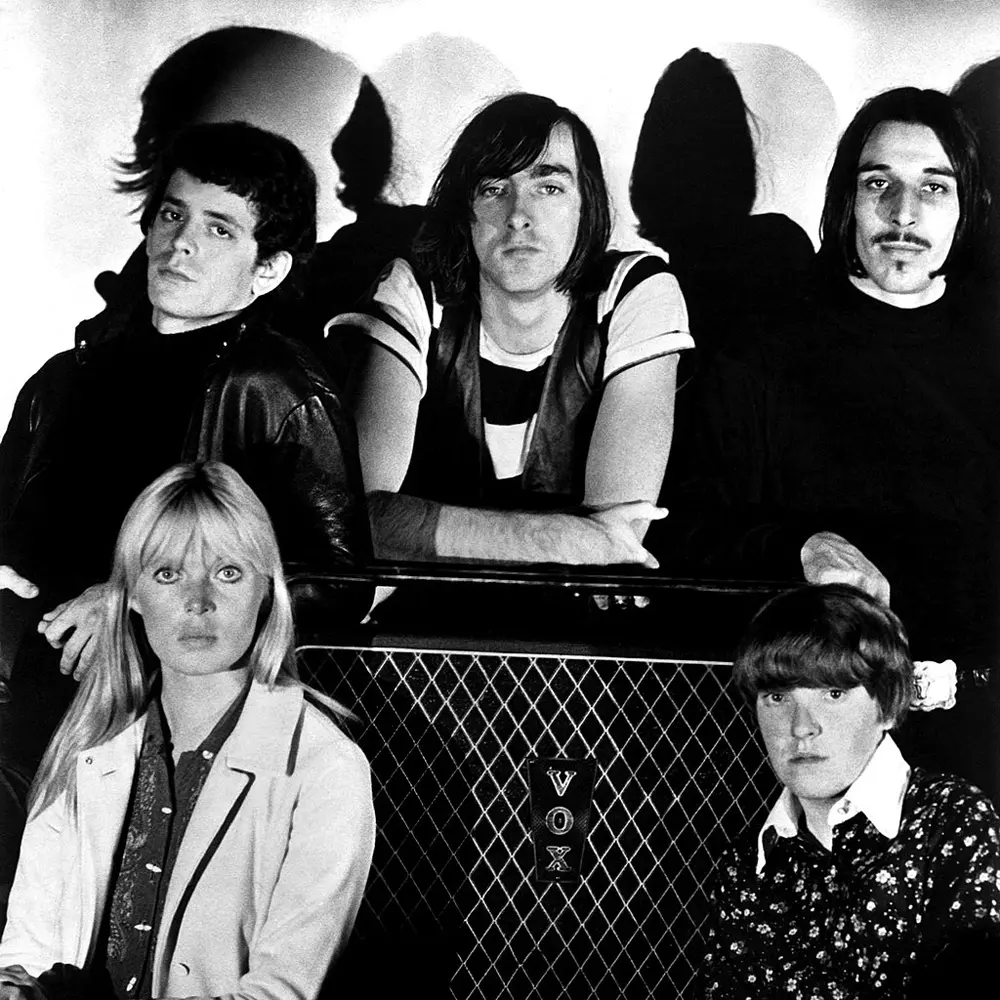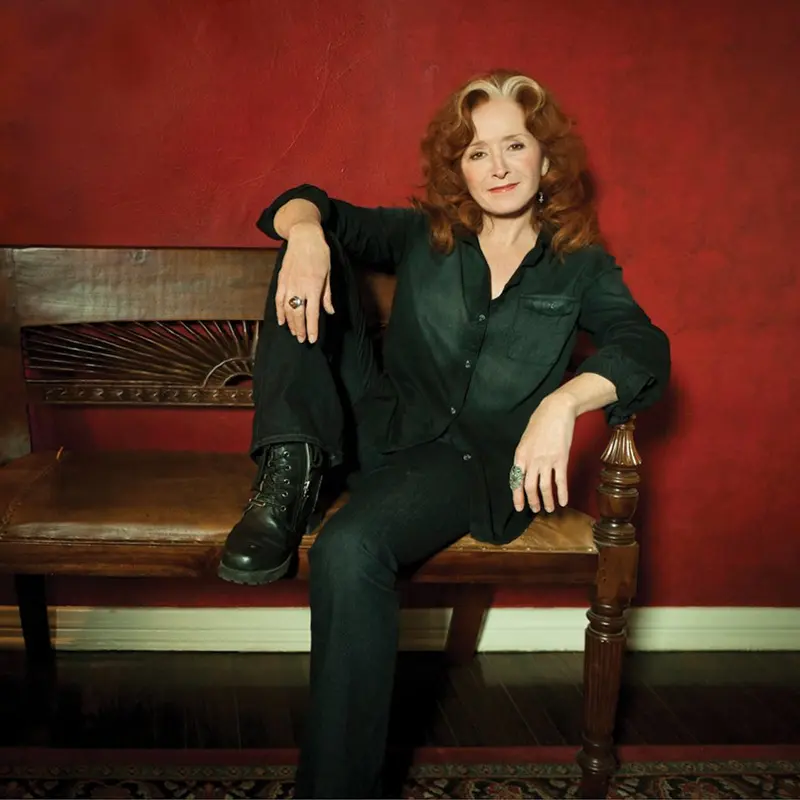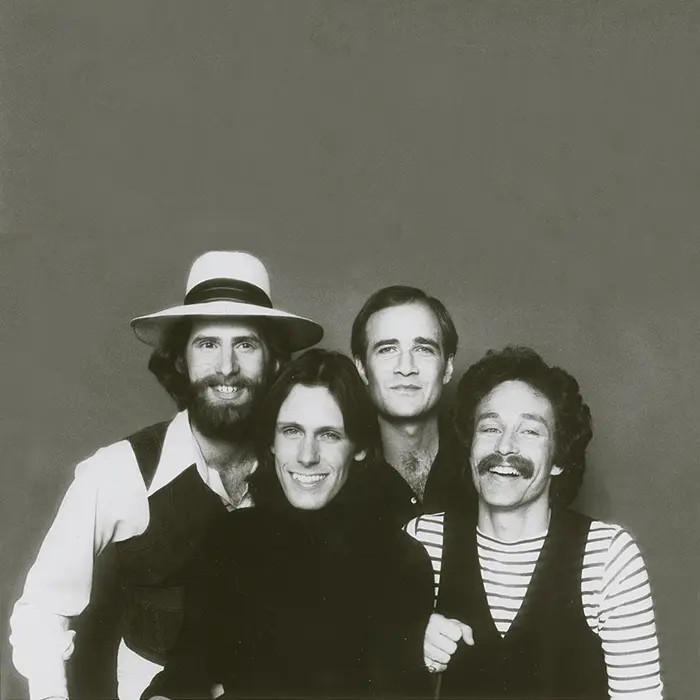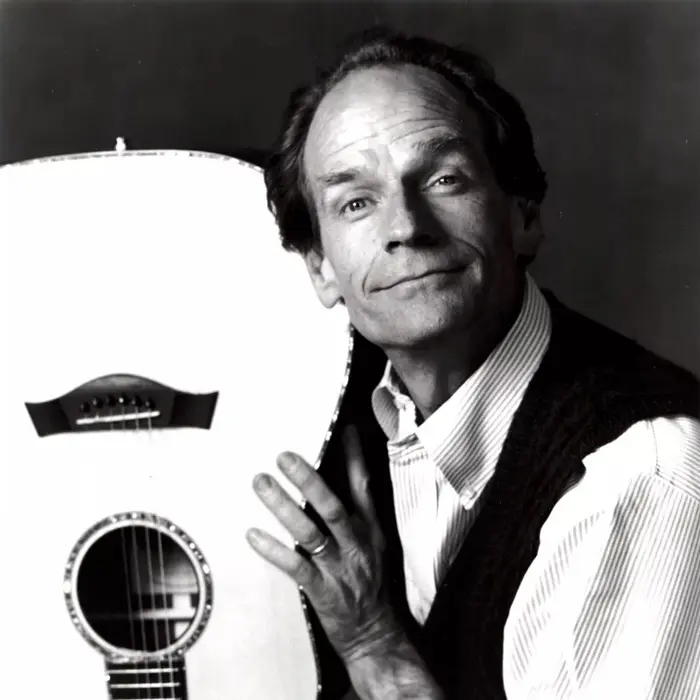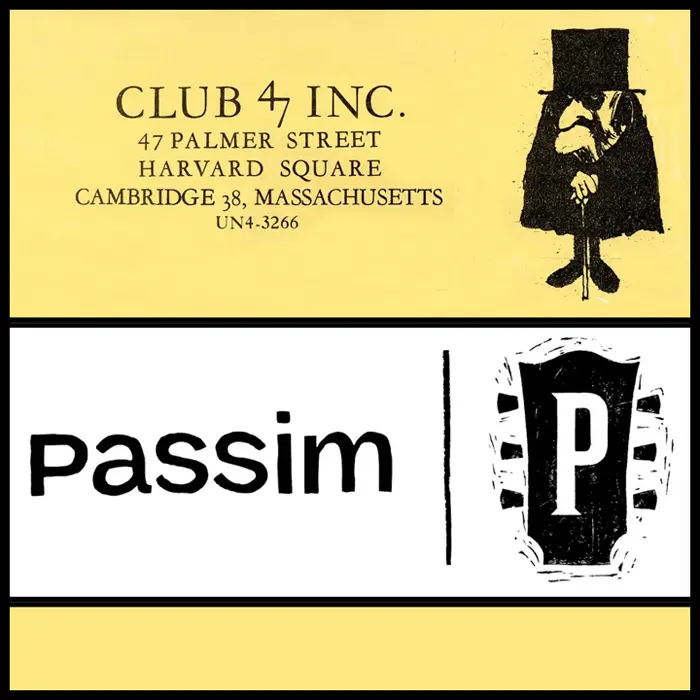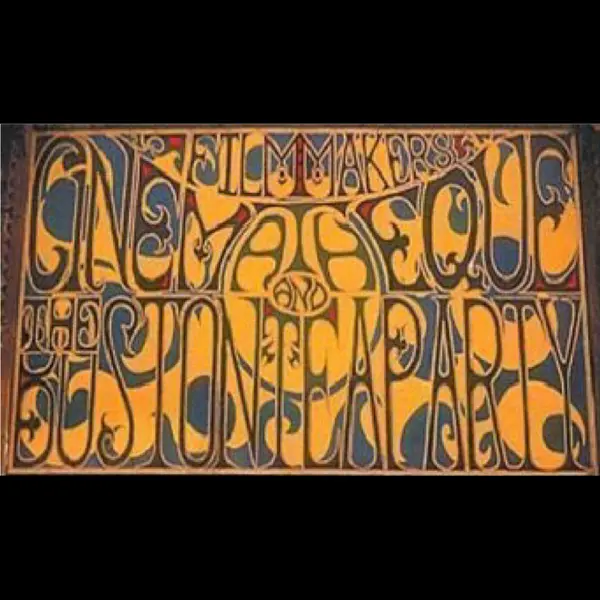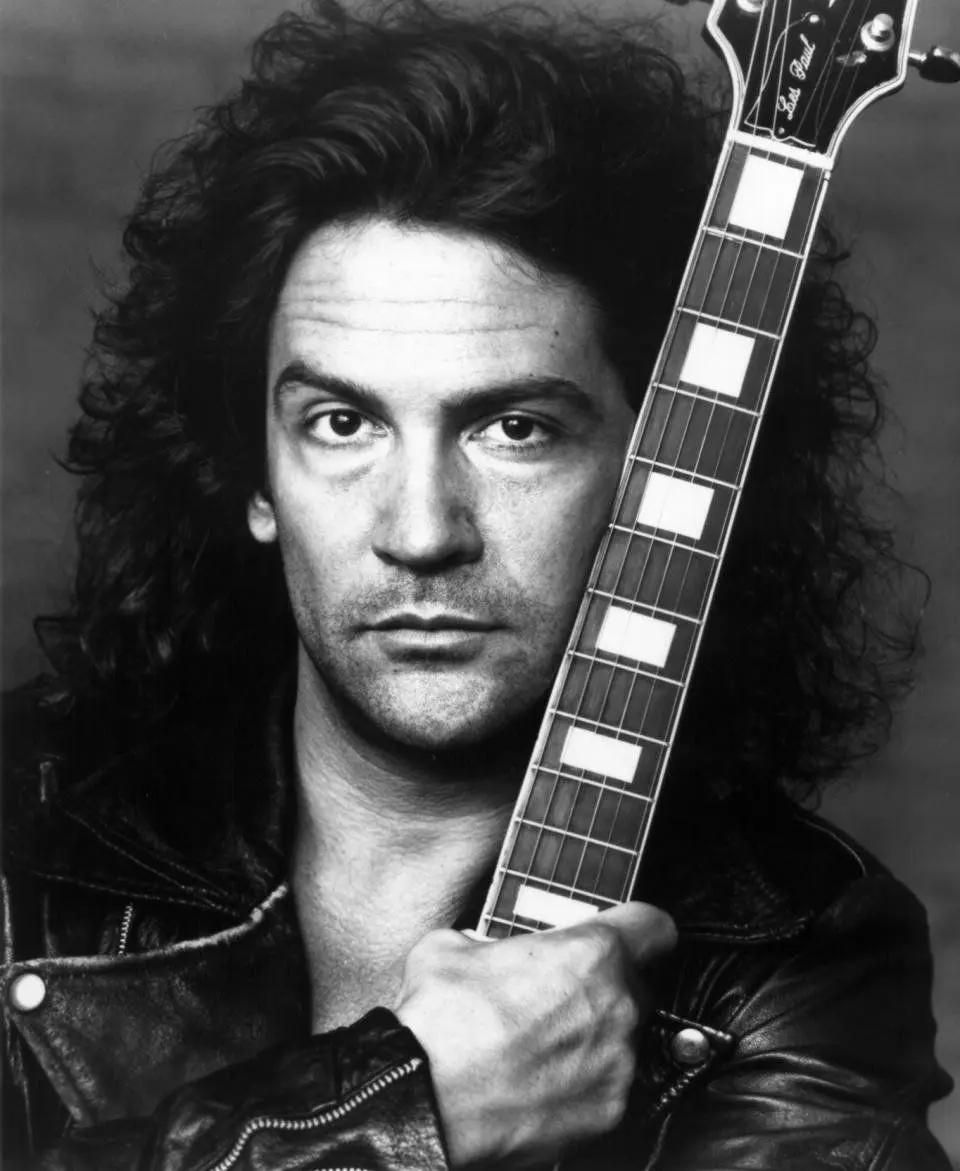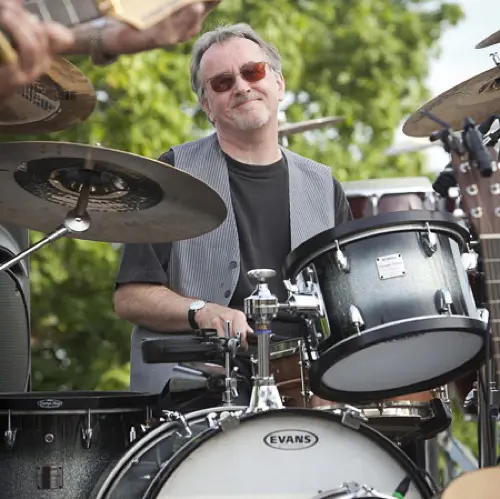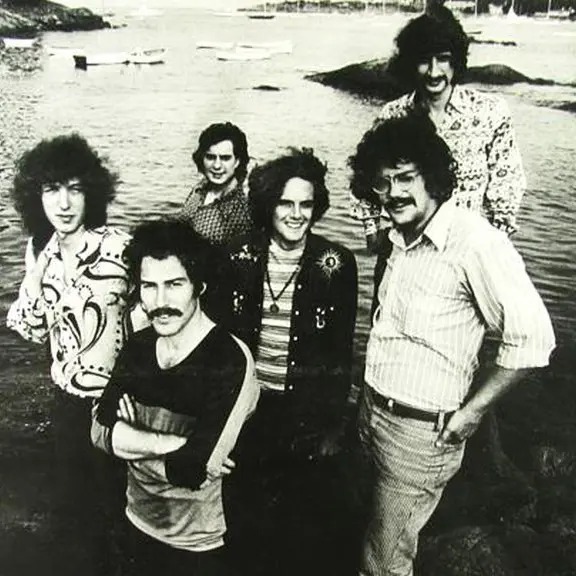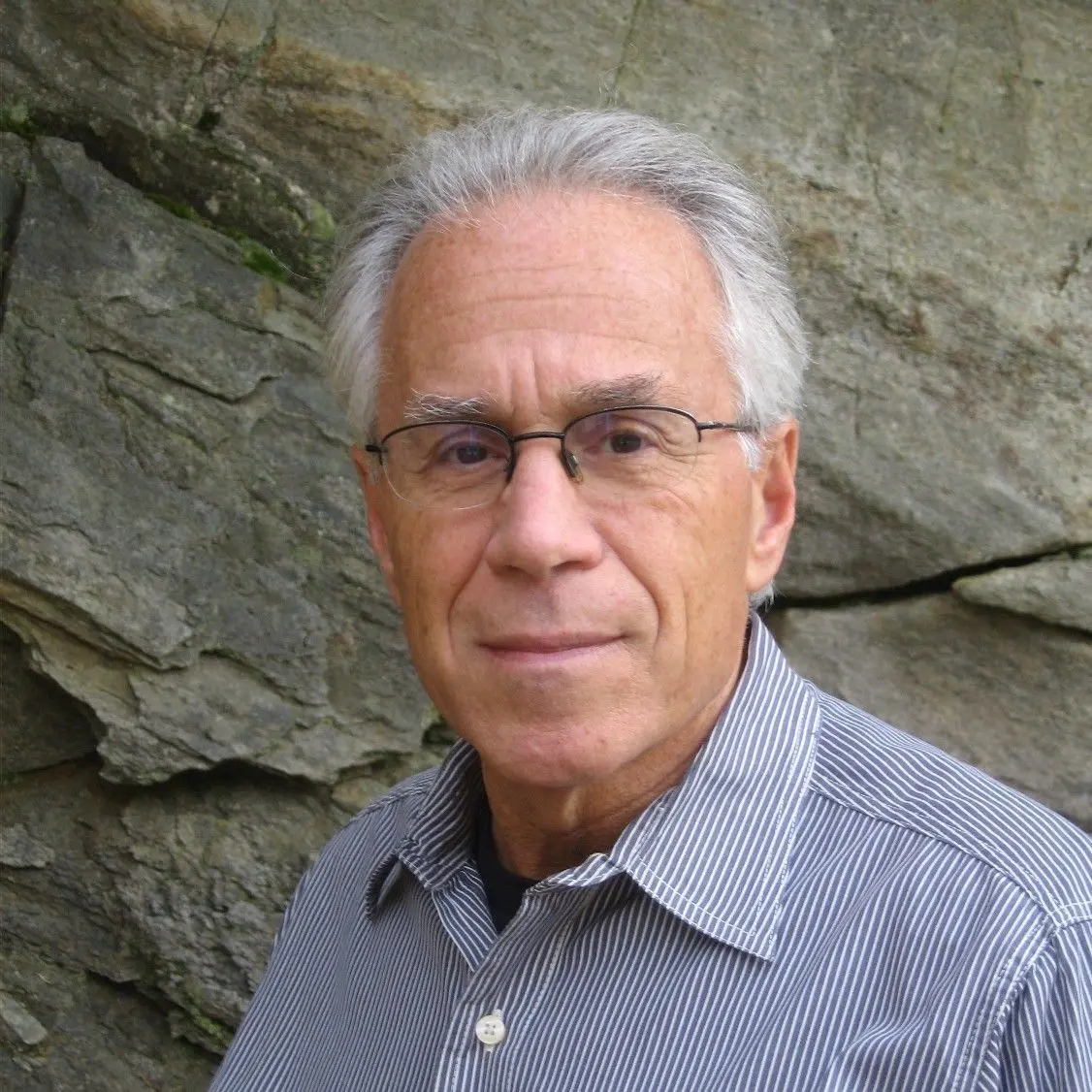Stonehenge Club

A Colonial building on the banks of the idyllic Ipswich River in the seaside town of the same name in Massachusetts was home to Stonehenge Club. Coffee and cocoa, not alcohol, were the “drugs” of choice in the room, noted for its superb acoustics, hospitable atmosphere and unique architecture for a club, including stained-glass windows and two working fireplaces. It had no air conditioning, so the windows were thrown open on hot summer nights and music wafted across the salt marshes.
In the mid-1960s, the building was the site of the well-known folk club King’s Rook, where artists including Tom Rush, Richard and Mimi Fariña, Judy Collins and Paul Butterfield appeared. In 1969, new owner Phil Cole (whose day job was manufacturing machine tools) and manager Don Montrose, both from nearby Gloucester, relaunched the room as Stonehenge, presenting more plugged-in acts, although acoustic artists continued to appear and local bands frequently opened for the headliners.
Notable appearances, Theme song
The venue became a noted showcase for emerging artists and groups touring in support of new albums. On a memorable New Years Eve in 1970, The J. Geils Band, their first album having been in stores for just a few weeks, led a conga line out the side door, around the back parking lot and, without missing a beat on the cowbell, returned the revelers through the opposite side door. The original Modern Lovers played two full sets there and you can listen to those classic performances here. The Flying Burrito Brothers sang about “Dim Lights, Thick Smoke and Loud, Loud Music,” which Stonehenge adopted it as its theme song.
Agents and managers liked to book their acts at Stonehenge Club because they looked and sounded good. Among the many performers were Boz Skaggs, Bo Diddley, Al Kooper, Commander Cody & The Lost Planet Airmen, Billy Squier (with The Sidewinders), Leo Kottke, John Lee Hooker, Martin Mull, Michael Nesmith (without The Monkees), The Velvet Underground (without Lou Reed), John Hammond Jr., Livingston Taylor, Pearls Before Swine, Mimi Fariña (both with husband, Tom Jans, and solo because she loved the room), Bonnie Raitt, Tim Hardin, The Holy Modal Rounders, Jon Pousette-Dart and Harry Chapin.
A&R scouts from record companies came around to check out new talent. Beatles producer George Martin, who came to the club to hear Seatrain, said the place reminded him of being in England and ordered English black tea. Other groups from the UK who gigged there included Fairport Convention (with Sandy Denny), Matthews Southern Comfort and the Jackie Lomax Band.
Financial pressure, Closing, Shoreborne Wilson House
By early 1972, however, the tide had turned. Escalating expenses for booking bands with name recognition put the squeeze on any venue that occupied the space between a rock ‘n’ roll ballroom (such as the former Boston Tea Party) and the little coffeehouses of Boston and Cambridge (such as the former Club 47). Like them, Stonehenge Club was forced to shut its doors as a result of the daunting financial challenges. Unlike its famous namesake in England, the New England club didn’t last for thousands of years. But many magical and mystical nights to remember took place there.
As for the building itself, which was originally constructed in the late 1600s, it’s now known as the Shoreborne Wilson House, located at 4 South Main Street in Ipswich. In 1980, after restoration, it was included on the National Register of Historic Places.
(by Steve Nelson and Don Montrose)

